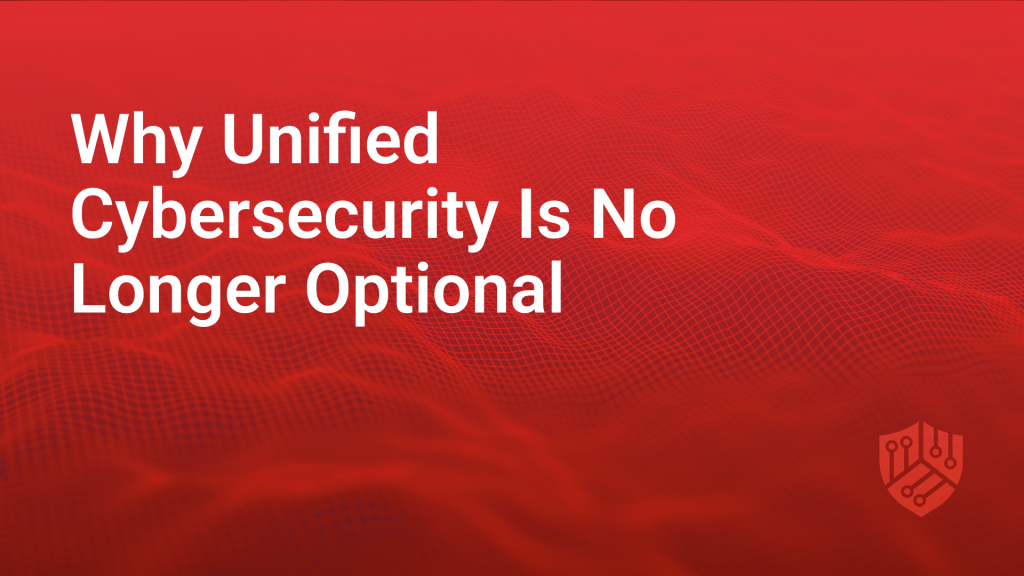September 26, 2025
Why Unified Cybersecurity is No Longer Optional

While cyberattacks continue to make headlines with their growing frequency and sophistication, global businesses face a hidden threat that often goes unnoticed: fragmented security systems. The CyberFlow cybersecurity team must issue this warning: unified cybersecurity is no longer a luxury for forward-thinking companies.
As organisations focus on defending against external threats, many overlook this critical internal vulnerability that could be their downfall. Those clinging to fragmented security approaches are inadvertently creating the very vulnerabilities that cybercriminals actively seek to exploit.
The Hidden Danger of Fragmented Security
Most companies do not intentionally create disjointed security systems. However, as organisations grow and develop, their cybersecurity requirements become more complex. Firms often respond by adopting a range of specialised tools—one for threat detection, another for compliance, and yet another for audit preparedness.
The unintended consequences include:
- Siloed operations: Security tools that operate in isolation without seamless data sharing
- Limited visibility: Inability to maintain comprehensive asset inventories across all platforms and environments
- Delayed response times: Critical alerts missed due to disconnected monitoring systems
This patchwork approach creates dangerous blind spots that attackers are eager to exploit. Instead of a single, coordinated defence, companies are left managing isolated pieces that fail to add up to a complete picture.
Why Traditional Endpoint Protection Solutions Fall Short
The fundamental problem with fragmented security lies in its inability to answer a basic but critical question: “What assets do we actually have?” Without a clear understanding of your company’s complete digital footprint—including devices, applications, and cloud environments—security teams are essentially operating blind.
The key challenges of fragmented approaches are:
- Asset discovery gaps: Incomplete inventory of connected devices and endpoint protection status
- Context loss: Critical threat intelligence scattered across disconnected systems
- Compliance difficulties: Struggling to maintain accurate records and demonstrate effective cybersecurity risk management
- Resource inefficiency: Overlapping functionalities and wasted investments in redundant tools
These gaps don’t just weaken security systems. They make it nearly impossible for teams to identify where weaknesses exist in the first place.
The Business Impact of Security Fragmentation
Beyond the obvious security risks, fragmented cybersecurity approaches create significant operational and financial challenges that affect the entire business.
Financial and operational consequences include:
- Increased operational costs: Labour-intensive management and integration of multiple tools
- Slower incident response: Delayed threat detection and mitigation due to system complexity
- Compliance vulnerabilities: Difficulty meeting regulatory requirements and avoiding penalties
- Reduced team efficiency: Security professionals are overwhelmed by managing disparate systems and interfaces
With regulations like the Digital Operational Resilience Act (DORA) placing heavy emphasis on cybersecurity compliance, companies can no longer afford the risks associated with fragmented security approaches.
The Unified Cybersecurity Advantage
Unified cybersecurity represents a fundamental shift from reactive, siloed security measures to proactive, integrated protection. Rather than managing multiple disconnected tools, companies gain comprehensive visibility and control through a single, cohesive platform.
Core benefits of unified approaches:
- Complete asset visibility: Real-time understanding of every connected device, application, and endpoint across your enterprise security environment
- Contextual threat detection: AI-driven capabilities that analyse risks within the broader organisational context
- Streamlined operations: Simplified management through centralised dashboards and automated workflows
- Accelerated response times: Immediate threat identification and coordinated response across all security layers
This comprehensive approach transforms security from a complex burden into a strategic business enabler.
Future-Proofing Your Security Strategy
As cyber threats continue evolving and digital environments become increasingly complex, the limitations of fragmented security will only become more apparent. Companies that fail to embrace unified approaches risk falling further behind in the cybersecurity arms race.
Strategic Advantages of Unified Security:
- Scalability: Single platform that grows with your company’s needs
- Adaptability: Rapid response to emerging threats and changing business requirements
- Cost efficiency: Reduced overhead from managing multiple vendors and tools
- Improved team productivity: Simplified workflows that enable security professionals to focus on strategic initiatives
The path forward requires abandoning the outdated model of point solutions in favour of comprehensive, integrated security platforms.
Secure Your Digital Future with CyberFlow
Don’t let fragmented security systems leave your business vulnerable to evolving cyber threats. CyberFlow’s advanced cybersecurity protection delivers the unified approach your business needs to stay ahead of attackers while simplifying operations and reducing costs.
Ready to strengthen your cybersecurity foundation? Contact us today to discover how we can transform your protection strategy. Don’t wait for the next attack—take control of your security future now!
About Us
If you are interested on apply more security to your business contact us
